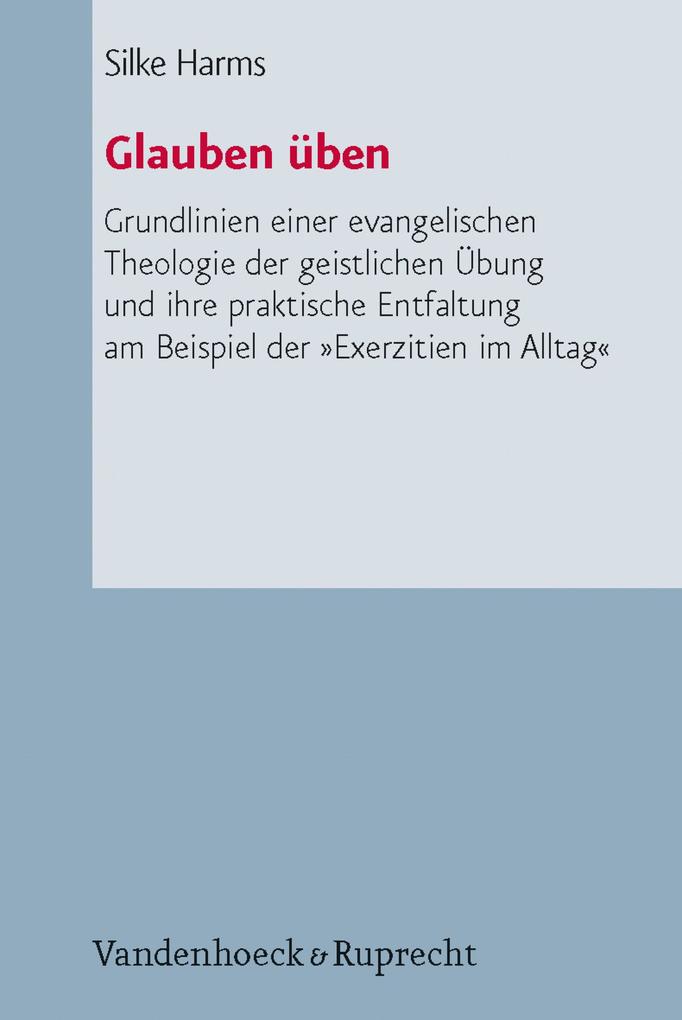
Sofort lieferbar (Download)
Asceticism, the teaching of religious practicing, was long neglected by practical theology. The question whether it is at all possible to "practice" one s faith was less the problem than the question how to learn to believe. In this volume the author studies the meaning of practicing for Protestant theology and religious life. She proves that the transfer of substance of faith today necessarily means practicing Christian tenets. As an example she uses the course model entitled "Everyday Exercises," which stems originally from Jesuit circles and became popular among Protestants in the 1990s. She examines the path this method of religious exercises took before it became part of Protestant practice, and shows that it can now rightly be considered part of the Protestant tradition. Based on an extensive study of the writings of Martin Luther and Friedrich Schleiermacher the author points out the importance of these two theologians for Protestant asceticism today. Religious practicing within the Protestant Church is marked by a relational-communicative approach: The goal is not to become a "master," but to be transformed by encountering the living God. Practicing occurs in the polarity between individuality and sociality, between activity and passivity, between everyday life and special events and places. Protestant asceticism has as its goal to keep all three dimensions in perspective and not to be limited by the one or other influence.
Inhaltsverzeichnis
1;Inhalt;6 2;Einleitung;10 3;Übung Alltag Laie: Erste Annäherungen;16 4;Teil I: Geistliche Übungen und Exerzitien im Alltag in der Kirche des 20./ 21. Jahrhunderts;22 4.1;Religiosität im 21. Jahrhundert: Wahrnehmungen und Umfrageergebnisse;24 4.2;1 Exerzitien im Alltag Gestalt und Geschichte;30 4.2.1;1.1 Die Elemente der Exerzitien im Alltag;30 4.2.2;1.2 Exerzitien im Alltag bei Ignatius von Loyola und den frühen Jesuiten;39 4.2.3;1.3 Die Wiederentdeckung der Exerzitien in der katholischen Kirche;46 4.2.4;1.4 Exerzitien in der evangelischen Kirche;59 5;Teil II: Geistliche Übung bei Martin Luther und Friedrich Schleiermacher;88 5.1;2 Geistliche Übung bei Martin Luther;90 5.1.1;2.1 Geistliche Übung als Katechismusübung;91 5.1.2;2.2 Orte und Sozialgestalten der Katechismusübung;101 5.1.3;2.3 Grundlegende Charakteristika der geistlichen Übung bei Martin Luther;122 5.1.4;2.4 Theologie der geistlichen Übung bei Martin Luther;126 5.2;3 Religiöse Übung bei Friedrich Schleiermacher;143 5.2.1;3.1 Religiöse Übung im Rahmen der Erziehung;147 5.2.2;3.2 Religiöse Übung im Leben des Erwachsenen;154 5.2.3;3.3 Theologie der religiösen Übung bei Friedrich Schleiermacher;200 5.3;4 Grundlinien evangelischer Aszetik;218 5.3.1;4.1 Spannungsfelder geistlicher Übung;218 5.3.2;4.2 Kriterien einer evangelischen Theologie der geistlichen Übung;229 5.4;5 Exerzitien im Alltag als Modell geistlicher Übung im Alltag;251 5.4.1;5.1 Exerzitien im Alltag zwischen Individualität und Sozialität;251 5.4.2;5.2 Exerzitien im Alltag als christliche Praktik;253 5.4.3;5.3 Die Brückenfunktion der Exerzitien im Alltag;254 5.4.4;5.4 Exerzitien im Alltag als Handwerkszeug;256 5.4.5;5.5 Laien und Exerzitien im Alltag;257 5.4.6;5.6 Die relational-kommunikative Dimension der Exerzitien im Alltag;258 5.4.7;5.7 Exerzitien im Alltag als Erfahrungsweg;260 5.4.8;5.8 Exerzitien im Alltag als Einübung in das Ja Gottes;262 5.4.9;5.9 Exerzitien im Alltag und Glaubenskurse;263 5.4.10;5.10 Plädoyer für evangelische Exerzitien
im Alltag;264 6;Literatur;266 7;Exerzitien im Alltag Kurse;287 8;Danksagung;289
im Alltag;264 6;Literatur;266 7;Exerzitien im Alltag Kurse;287 8;Danksagung;289
Mehr aus dieser Reihe
Produktdetails
Erscheinungsdatum
04. April 2012
Sprache
deutsch
Untertitel
Grundlinien einer evangelischen Theologie der geistlichen Übung und ihre praktische Entfaltung am Beispiel der »Exerzitien im Alltag«.
Dateigröße in MByte: 2.
Seitenanzahl
288
Dateigröße
1,81 MB
Reihe
Arbeiten zur Pastoraltheologie, Liturgik und Hymnologie
Autor/Autorin
Silke Harms
Verlag/Hersteller
Kopierschutz
ohne Kopierschutz
Family Sharing
Ja
Produktart
EBOOK
Dateiformat
PDF
ISBN
9783647570167
Entdecken Sie mehr
Bewertungen
0 Bewertungen
Es wurden noch keine Bewertungen abgegeben. Schreiben Sie die erste Bewertung zu "Glauben üben" und helfen Sie damit anderen bei der Kaufentscheidung.

































